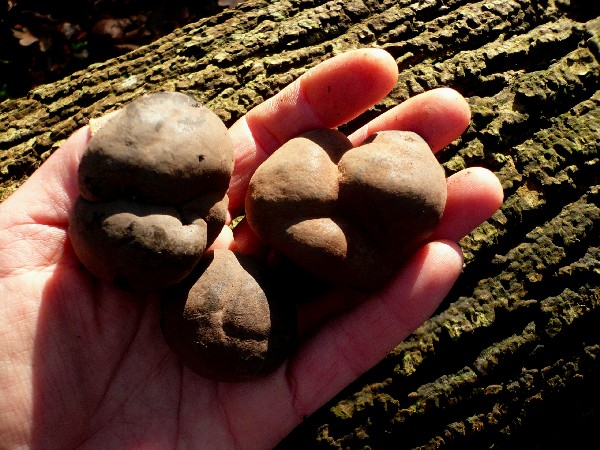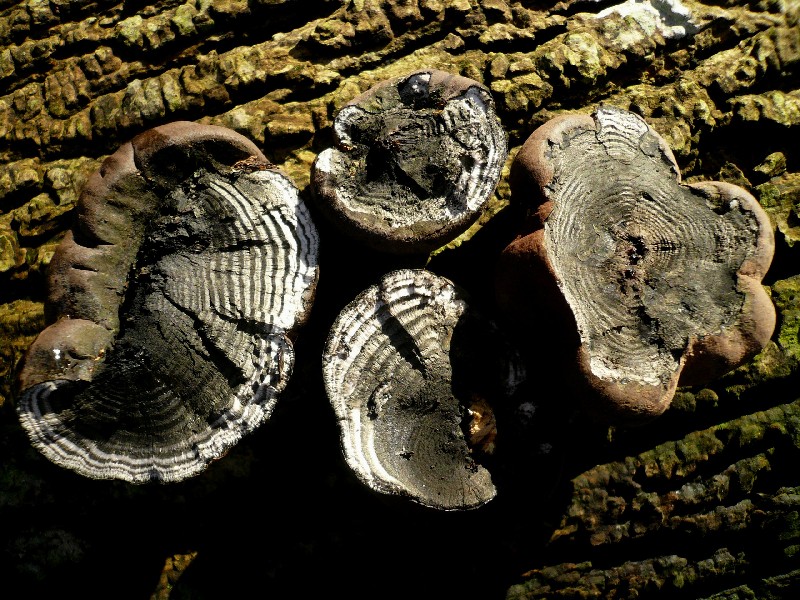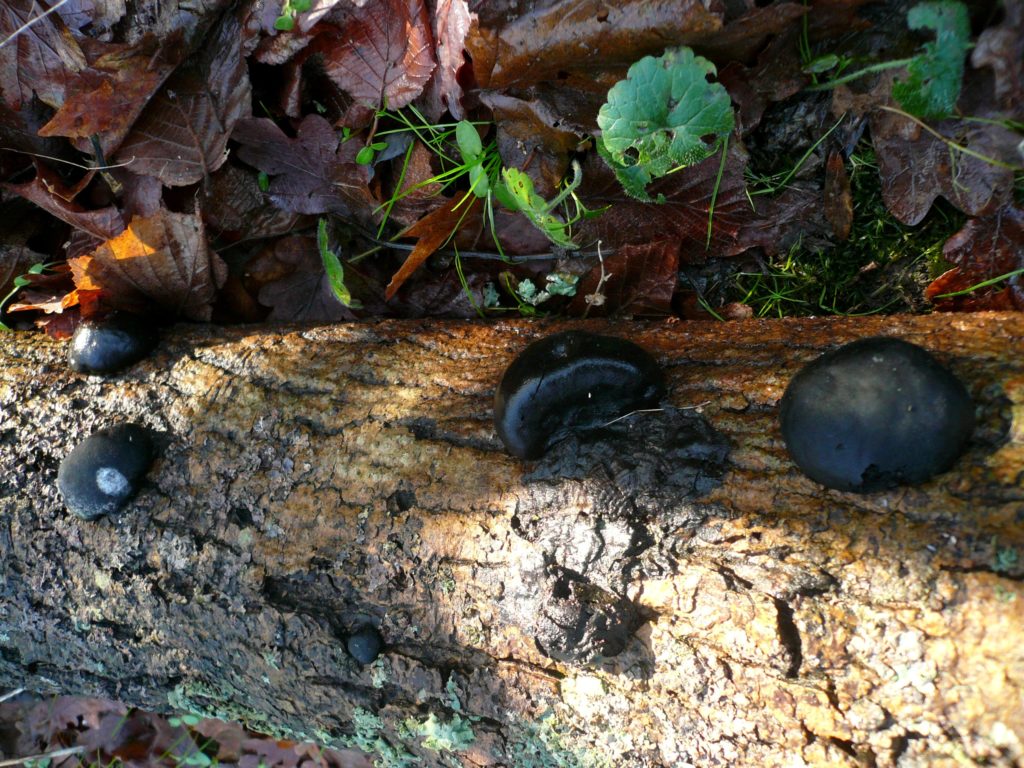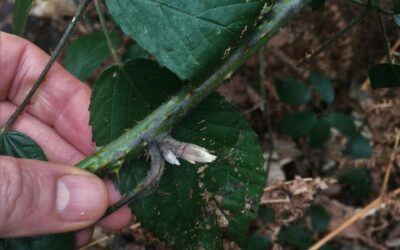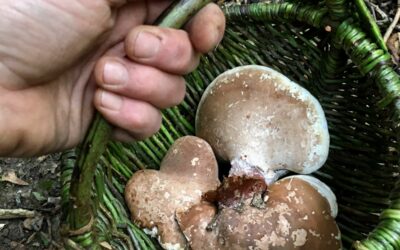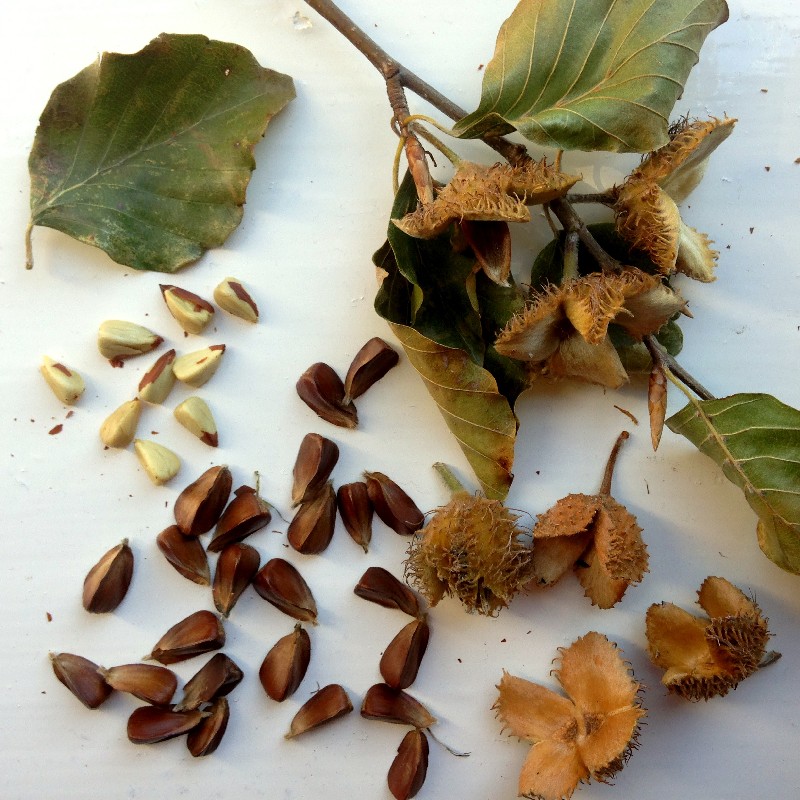King Alfred’s Cakes
At this time of year there’s not so much around to forage, but these are a favourite for fire-making. I always keep an eye open for them when I’m out in the winter woods.
Their Latin name is Daldinia concentrica and if you break one open you’ll see why: layers of concentric growth rings are easily visible. They grow on dead and decaying wood, particularly ash trees.
It’s the blackish ones you want to prise off; leave any grey ones as they need to mature. If they’re too old to be useful they’ll crumble in your hand. Take only what you need, never take all of them. The forager’s guide is to take only 10%.

Their name comes from the cakes that King Alfred is said to have burned while in hiding in Wantage (near the famous Uffington White Horse), back in the 9th century.
Like the king’s cakes, these fungi are inedible, but they’re excellent to use in fire-making.
We forage for them and use them on the Native Hands Fire-Making Course
.
